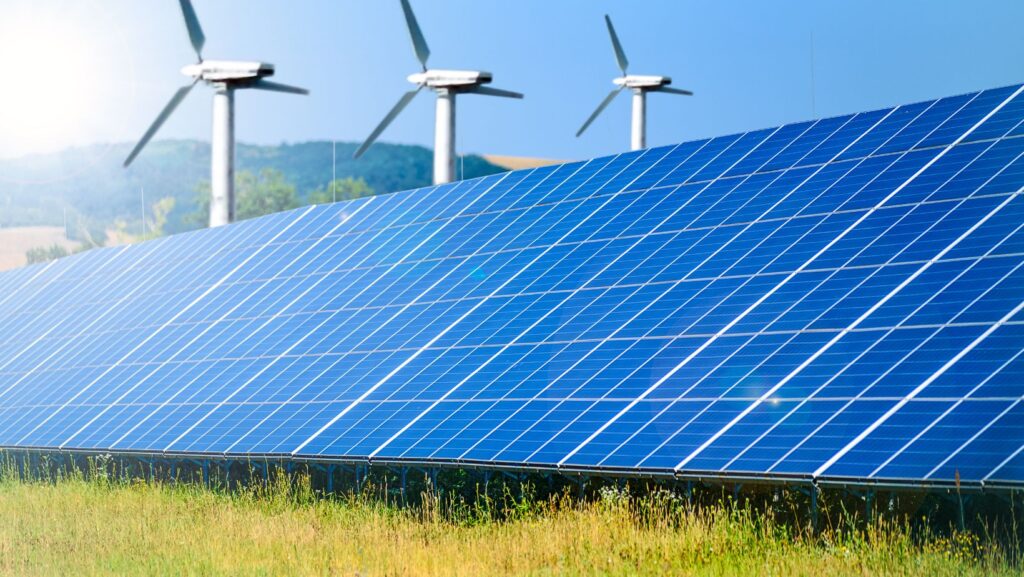Climate change has emerged as one of the most critical challenges facing humanity. Its consequences — from rising global temperatures and melting ice caps to extreme weather events — threaten ecosystems, economies, and human livelihoods worldwide. The most effective and scalable solution to this crisis lies in the global transition toward renewable energy. By embracing clean and sustainable power sources, we can reduce greenhouse gas emissions, minimize pollution, and ensure long-term energy security for future generations.
In recent years, the renewable energy movement has accelerated due to environmental concerns, government incentives, and technological innovation. Industries across the globe are transforming rapidly, just as digital technologies like 1win have revolutionized entertainment and online gaming. Similarly, renewable energy technologies are redefining how we generate and consume power — shifting us away from fossil fuels toward a cleaner, more resilient energy ecosystem.
Understanding Renewable Energy
Renewable energy comes from natural sources that are replenished on a human timescale — including solar, wind, hydropower, and geothermal energy. Unlike fossil fuels, renewables do not release harmful greenhouse gases during operation and offer sustainable alternatives for electricity, heating, and transportation.
Solar Energy
Solar panels, or photovoltaic (PV) systems, capture sunlight and convert it into electricity. Once considered expensive and niche, solar energy has become one of the most cost-effective power sources worldwide. The International Energy Agency (IEA) reports that the cost of solar PV has dropped by over 80% since 2010, making it accessible to households and large-scale utilities alike.
Wind Energy
Wind turbines harness kinetic energy from air movement to produce clean electricity. Modern wind farms can power millions of homes, and offshore installations are rapidly expanding. Countries such as Denmark, the UK, and the Netherlands generate more than 40% of their electricity from wind power.
Hydropower
Hydroelectric dams use the flow of rivers to spin turbines and produce energy. This long-standing technology supplies around 16% of the world’s electricity, making it the largest renewable energy source today. While effective, it must be managed carefully to minimize ecological impacts on rivers and wildlife.
Geothermal Energy
By tapping into heat from beneath the Earth’s surface, geothermal plants generate consistent and low-emission power. Regions like Iceland and New Zealand rely heavily on geothermal energy, highlighting its reliability as a base-load power source.
The Environmental Impact of Renewable Energy
One of the greatest strengths of renewable energy lies in its ability to reduce environmental damage. Transitioning to clean energy sources drastically cuts carbon dioxide (CO₂) emissions — the primary driver of global warming. Unlike coal or oil, renewable energy systems emit little to no pollutants during operation, improving air quality and reducing respiratory illnesses.
For instance, replacing coal-fired plants with wind or solar power can prevent thousands of premature deaths linked to air pollution each year. According to the World Health Organization (WHO), outdoor air pollution causes approximately 4.2 million deaths annually — a figure that can be significantly reduced through widespread renewable adoption.
Economic Advantages of the Green Transition
The renewable energy sector is not only environmentally sustainable but also economically powerful. The International Renewable Energy Agency (IRENA) estimated that more than 13 million people were employed in the renewable energy industry in 2023 — a number projected to exceed 40 million by 2050.
Each renewable project stimulates local economies by creating jobs in manufacturing, installation, and maintenance. Solar panel factories, wind farm construction, and grid modernization projects provide employment in both developed and emerging economies.
Moreover, renewables help stabilize energy prices by reducing dependency on imported fossil fuels, which are subject to global market fluctuations. Countries investing heavily in renewables gain long-term energy security and economic independence.
Technological Innovation and Storage Solutions
Despite the advantages, renewable energy faces challenges — particularly the intermittent nature of wind and solar power. Energy generation depends on sunlight and wind conditions, which can fluctuate daily. However, advanced energy storage technologies such as lithium-ion batteries and hydrogen fuel cells are revolutionizing the sector.
Battery capacity has tripled in the past five years, and costs have fallen by nearly 90%. This progress allows excess electricity to be stored and deployed when renewable output is low. Additionally, smart grids — digital systems that balance energy supply and demand — are making renewable power more reliable and efficient than ever before.
Policy and Global Collaboration
Government policies are central to the renewable transition. The Paris Agreement, adopted in 2015, set a global target to limit warming to 1.5°C above pre-industrial levels. Achieving this requires cutting global emissions nearly in half by 2030 — a goal that depends heavily on renewable energy expansion.
Countries such as Germany, China, and the United States are leading the charge. Germany’s “Energiewende” initiative aims to phase out coal and achieve 80% renewable electricity by 2030. China, already the world’s largest producer of solar panels, is rapidly decarbonizing its energy sector. Meanwhile, the U.S. Inflation Reduction Act of 2022 provides billions in tax incentives for clean energy projects.
Overcoming Financial Barriers
While the long-term costs of renewable energy are low, upfront investment remains a major barrier. Solar farms, offshore wind turbines, and battery storage facilities require substantial capital. Fortunately, governments and private institutions are offering innovative financing models — such as green bonds, power purchase agreements (PPAs), and international development funds — to accelerate the transition.

Additionally, individuals can participate through community solar programs, rooftop installations, and energy cooperatives. This democratization of energy ensures that clean power is not only a corporate or governmental responsibility but a collective global effort.
The Future Outlook: Toward a Carbon-Free World
Looking ahead, the renewable energy revolution will define the next century. By 2050, renewables are expected to account for nearly 90% of global electricity according to IEA projections. Emerging technologies such as floating solar panels, perovskite cells, and offshore wind turbines will continue to expand efficiency and accessibility.
Furthermore, coupling renewable energy with electric vehicles (EVs) and smart infrastructure will transform how cities operate — reducing emissions in transportation, industry, and residential sectors simultaneously.
Conclusion
Renewable energy represents more than a technological advancement; it is a societal transformation toward sustainability, equity, and resilience. The shift to clean energy can stabilize the climate, drive economic growth, and ensure a healthier planet for future generations.
By supporting renewable initiatives, adopting eco-friendly policies, and investing in innovation, humanity can move from dependence on finite, polluting fuels to an era of sustainable prosperity. The path to combating climate change begins with renewable energy — the cornerstone of a cleaner, brighter future.


More Stories
Forex Trading in Canada: What You Need to Know Before Starting in 2025
Viberate: The Secret Weapon for Music Professionals
INTIMATE STREAMING ETIQUETTE FOR COUPLES